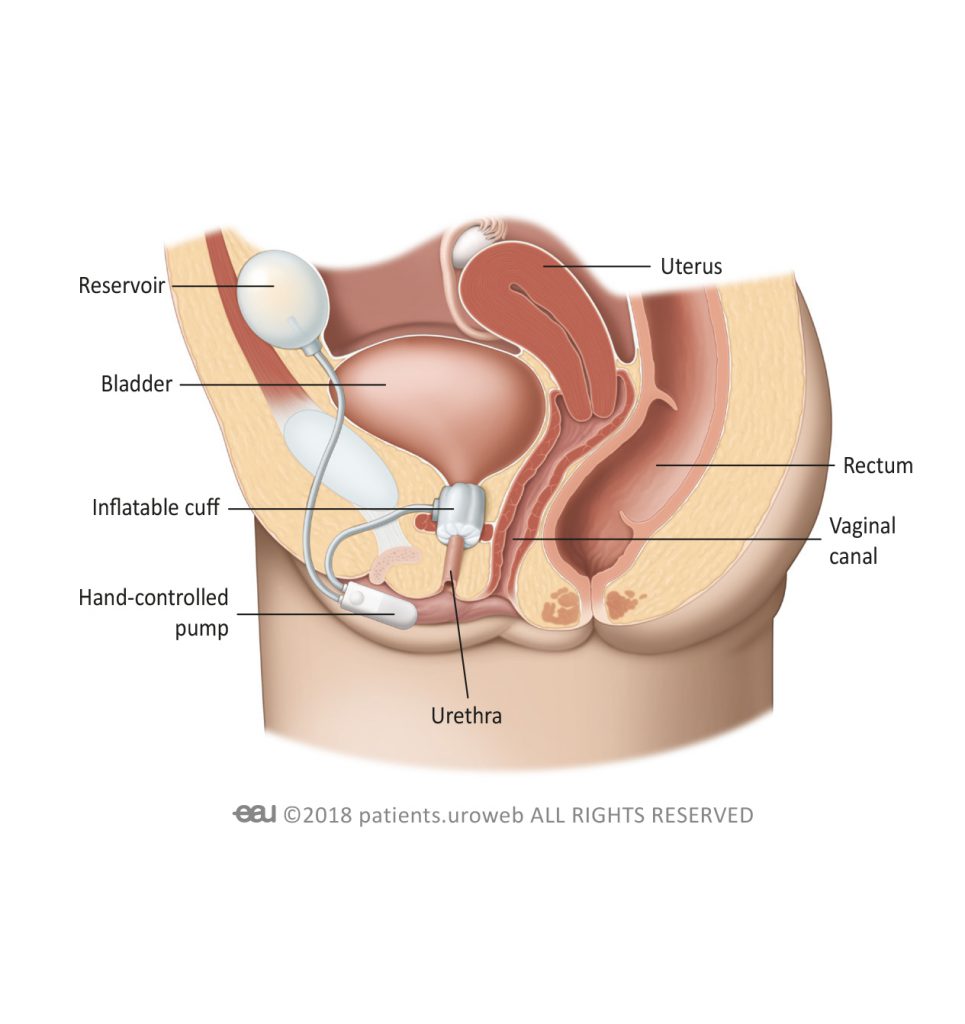An artificial urinary sphincter implant, or AUS, operation is only offered for patients with complicated stress incontinence problems. It may be offered to you if you have previously had surgery for your stress incontinence, but it didn’t work. Alternatively, your doctor may recommend this operation if other treatment options have a low chance of success.
Before being offered this operation, your doctor will need to work out whether it will be effective. You will be asked to do a urodynamic test so your doctor can check how your lower urinary tract is working. This test will help your doctor determine if an artificial urinary sphincter implant may work for you.
An artificial urinary sphincter implant operation involves putting a cuff around the urethra. The surgeon makes incisions in the abdomen and in the front wall of the vagina. A water-filled balloon, called a reservoir, is inserted under the lower abdominal muscles above the bladder. This inflates the cuff via a hand-controlled pump.
The pump is placed just under the skin of one of the labia (vaginal lips) so that it is accessible. The pump is hand-operated so that you can control it yourself in your everyday life.
The cuff is left open (no fluid is pumped in) around your urethra, until your doctor activates it a few weeks later. This is to allow time for the operated area to settle down following surgery. Usually, stitches that dissolve and disappear are used, so you do not need to have them removed.
With this treatment, some people find that their stress incontinence is cured, whereas for other people, they have an improvement in their symptoms but still experience some bladder leakage.


